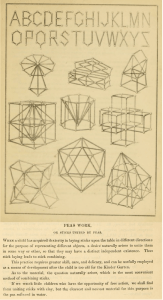SELF-REFLECTION: THE WHAT, THE WHY, AND THE HOW
Dr. Simon Brownhill
simon.brownhill@bristol.ac.uk
The call for learners to become accomplished in reflection is increasingly prevalent across much of the world (van Velzen, 2017). To aid this, a wealth of practical paper-based manuals, online tutorials and face-to-face training is available for teachers to learn from to help foster student engagement. However, a noticeable gap in this support is evident when teachers seek to engage learners in self-reflection. This blog entry aims to positively address this by offering adapted extracts from a literature-based thoughtpiece entitled Asking key questions of self-reflection which was written by Dr. Simon Brownhill and published in the journal Reflective Practice (2021). Let’s start with a very important question: what is self-reflection?
What is self-reflection?
In simple terms, Neale (2019) describes self-reflection as ‘taking time to think, contemplate, examine and review yourself as part of increasing your self-awareness.’ This resonates with the thinking of Shaw, Kuvalja and Suto (2018, p.2) who see self-reflection, in the context of students, as ‘reflect[ing] upon their own learning, which includes their personal experiences, perspectives, beliefs and claims.’ Synergies here are noted in the description of self-reflection proposed by Jonassen, Howland, Marra and Crismond (2008, p.3):
by reflecting on [a] puzzling experience, learners integrate their new experiences with their prior knowledge about the world, or they establish goals for what they need to learn in order to make sense out of what they observe.
Whilst some authors regard self-reflection as a trait or a state, self-reflection is commonly considered to be ‘a processof self-analysis, self-evaluation, self-dialogue and self-observation’ (Yip, 2006, p.777; added emphasis). Just as there are various types of reflection, so too are there different types of self-reflection. These include:
- Self-reflection which embraces a problem or solution-focused approach – this is where learners constructively reflect on how best to reach their goals.
- Self-reflection which utilises a self-focused approach – this is where learners attempt to understand, contain or dissipate their negative emotional, cognitive and behavioural reactions. This approach connects to the idea ofcritical self-reflection which refers to the process of questioning one’s own assumptions, presuppositions, and meaning perspectives (Mezirow, 2006).
- Collaborative self-reflection – self-reflection is typically seen as a solo venture whereas collaborative self-reflection (involving two or more individuals, be they peers, teachers or family members) can be specifically used ‘to better understand the needs of [others]’ (Sutherland, 2013, p.113).
- Structured and unstructured self-reflection – this is either ‘organised around one or more questions, either evaluative or exploratory’ [structured] or ‘letting thoughts flow without restriction, permitting ideas, insights and connections to randomly surface’ [unstructured] (Johnson, 2020, p.26).
So, if we know a little about what self-reflection is, another key question that needs to be asked is: why is it important?
Why is self-reflection important?
Ardelt and Grunwald (2018, p.188) recognise the importance of self-reflection by arguing that it ‘foster[s] human development and personal transformation and, ultimately, a better society.’ To validate this claim, the development and transformation of select groups of learners in different contexts as a result of engaging in self-reflection are presented in Table 1:
Location
|
Context
|
Details
|
| United States of America |
Middle schools |
‘Self-reflection provides opportunit[ies] for students to think about their own thinking and their own progress … allow[ing] students to honestly evaluate their own engagement with learning’ (McCoy, 2013, p.151). As such, this enhances students’ self-awareness and helps them to associate their learning efforts with the evaluation and grades they ultimately receive for their work.
|
| Estonia |
Social work undergraduates |
‘Self-reflection is significant to students’ training as it enhances their personal and professional development in practice … increas[ing] professional growth and competence, [which] in turn increases the quality of social work’ (Toros and Medar, 2015, p.89).
|
| Lithuania |
Special education degree students |
‘[S]elf-reflection provides students with [a] deeper perception of themselves as people with special educators’ needs and problems, personal strengths and competence limitations that enable them to identify sources and means for solving existing and future professional activity problems’ (Bubnys, 2019, p.1). |
TABLE 1: The development and transformation of select groups of learners in different contexts as a result of engaging in self-reflection.
So, if self-reflection is important, a key question that needs to be answered is: how can self-reflection be practically undertaken?
How can self-reflection be undertaken?
The most commonly advocated technique is the use of reflective questions and prompts for learners to ask themselves and answer. Osmond and Darlington (2005) support this, suggesting that these questions fall into different categories:
- case analysis questions – these are questions that help a student to self-reflect on an incident they were involved in, e.g. Why did you struggle to accept your teacher’s constructive feedback on your written work?
- exploring differences and presenting contingencies – these are questions that provide alternative eventualities, e.g. How would your explanation of the robbery (fictional) have differed if the alleged robber was found to be a woman? and
- before-and-after questions/sentence starters, e.g. What are your feelings before the mock job interview? What are your thoughts now?
Assertions that these questions and prompts are likely to only yield internalised responses from learners are challenged by Epler, Drape, Broyles and Rudd (2013) who advocate the use of ‘think-alouds’ which involve students verbalising their self-reflective thoughts and considerations while solving a problem. ‘Spoken self-reflection’ [my term] allows learners to articulate their self-reflective thoughts to facilitate deeper self-awareness and to allow others to be privy to their thinking and understanding. Other oral self-reflection techniques exist; these include:
- the recording of voiced thoughts as part of a digital diary (video or podcast),
- engaging in one-to-one discussions (face-to-face or online),
- giving verbal presentations, and
- partaking in a spoken dialogue with critical friends.
Self-reflection can also be facilitated through written activity, e.g. engaging with jotters, completing forms and templates, and producing essays, reports, papers/articles and blogs. Lindroth (2014, p.66) suggests that the use of journals has been identified as an ‘effective tool’ to promote self-reflection; indeed, Hatcher and Bringle (1996) recognise a variety of journals that students can engage with; these include personal, dialogue, highlighted, key phrase, double-entry, critical incident, and three-part journals. Creative approaches to self-reflection, including pictorial representation, mapping, game play and visualisations (Govaerts, Verbert, Klerkx and Duval, 2010) add to the plethora of techniques that are available to aid self-reflection. Of importance is the idea that learners are able to use and adapt techniques of their choosing that are both meaningful and work for them; this is due to the fact that it is theywho are the ones who have to put these selected techniques into action for their self-reflection.
Concluding thoughts
As a 21st Century Skill, self-reflection is deemed to be a new competency ‘which society is increasingly demanding of the existing workforce and, in educational terms, of the youth who need to be trained today for future jobs and careers’ (Joynes, Rossignoli and Amonoo-Kuofi, 2019, p.8). Its importance requires an academic investment in articulate, comprehensive and practically-informed resources to help teachers support their students engage in self-reflective activity. It is only by learning from literature such as that which is offered in this blog that a better understanding of self-reflection can be acquired, and the benefits of self-reflection to improve the potential for behavioural change can be reaped (Smith and Yates, 2012).


